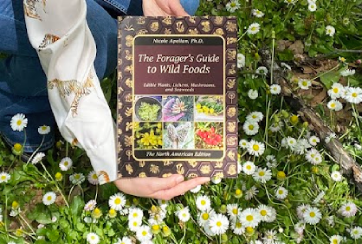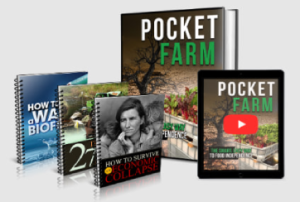Table of Contents
Introduction to Foraging and Its Benefits
Forager’s Guide to Wild Foods: Foraging, the practice of gathering wild foods from nature, has been a fundamental human activity since the dawn of time. Historically, our ancestors relied on foraging to sustain themselves, developing a deep understanding of the natural world and the various plants, fungi, and animals that inhabit it. This ancient skill has provided humans with a sustainable food source for millennia, long before the advent of agriculture and modern food systems.
In contemporary society, foraging is experiencing a resurgence in popularity, driven by growing environmental and health consciousness. This renewed interest is not merely a nostalgic nod to our past, but a practical response to modern challenges. Foraging offers a sustainable and cost-effective way to supplement one’s diet with nutrient-rich, organic foods. Wild edibles are often free from pesticides and artificial fertilizers, making them a healthier alternative to many store-bought products.
Unlock the potential of foraging with the Forager’s Guide to Wild Foods: Moreover, foraging can be a crucial lifeline during crisis situations. Natural disasters, economic downturns, and other emergencies can disrupt traditional food supply chains, leading to shortages and inflated prices. In such scenarios, the ability to identify and harvest wild foods can provide an endless supply of nourishment. This skill not only enhances food security but also fosters a deeper connection to the environment, promoting a sustainable lifestyle.
Embrace environmental stewardship with the Forager’s Guide to Wild Foods: The environmental benefits of foraging are also significant. By sourcing food locally from the wild, foragers reduce their carbon footprint associated with food transportation and industrial agriculture. Additionally, the act of foraging encourages stewardship of natural habitats, as foragers tend to be mindful of the ecosystems they rely on for sustenance.
In essence, foraging is more than just a means of survival; it is a holistic approach to living in harmony with nature. Whether driven by necessity or a desire for a healthier, more sustainable lifestyle, the practice of foraging offers numerous benefits that are increasingly relevant in today’s world.

Why the Forager’s Guide to Wild Foods is Recommended
The Forager’s Guide to Wild Foods stands out as an invaluable resource for both novices and experienced foragers. Its comprehensiveness ensures that readers receive a holistic understanding of wild food foraging, covering a broad spectrum of edible plants, fungi, and other natural resources. The guide’s detailed descriptions and vibrant illustrations make identifying various species straightforward, mitigating the risks associated with misidentification.
One of the primary reasons this guide is highly recommended is its user-friendly format. The information is organized logically, making it easy to navigate through different sections. This facilitates quick access to critical details, whether you’re in the field or planning your foraging activities at home. Additionally, the step-by-step instructions on harvesting and preparing wild foods ensure that readers can safely and efficiently utilize their finds.
Possessing the Forager’s Guide to Wild Foods brings numerous benefits. Firstly, it significantly enhances one’s self-sufficiency. In crisis situations where conventional food supplies may be disrupted, the knowledge imparted by this guide can be a lifeline, enabling individuals to source food directly from their natural surroundings. This aspect is particularly crucial in scenarios ranging from natural disasters to economic downturns.
Moreover, the guide serves as an excellent tool for honing survival skills. Understanding how to forage effectively can instill a sense of confidence and preparedness. This skill set is not only practical but also empowering, providing a means to thrive independently of modern conveniences. Furthermore, foraging fosters a deeper connection with nature. It encourages individuals to spend more time outdoors, observing and appreciating the natural world, which can be profoundly rewarding.
In essence, the Forager’s Guide to Wild Foods is more than just a book; it’s a gateway to a more self-reliant and enriched lifestyle. Whether you’re embarking on your first foraging adventure or seeking to deepen your existing knowledge, this guide offers the insights and tools necessary to succeed.
Foraging for wild foods can be a rewarding and essential skill, particularly in crisis situations where resources are scarce. Ensuring success in foraging begins with equipping yourself with the right tools and adhering to key safety tips. Here, we outline the fundamental tools and crucial safety measures to take into account during your foraging expeditions.
Essential Tools for Foraging
Forager’s Guide to Wild Foods: Having the right tools can make your foraging experience both efficient and enjoyable. A sturdy basket or a foraging bag is indispensable for collecting your finds without damaging them. Opt for a breathable material to keep your harvest fresh. Gloves are another must-have, offering protection from thorns, rough surfaces, or potentially harmful plants. A good pair of gardening gloves can serve this purpose well.
Identification guides are pivotal in ensuring that you correctly recognize edible plants while avoiding harmful ones. Field guides specific to your region are particularly valuable, as they provide detailed descriptions and images of local flora. Additionally, carrying a small knife or a pair of scissors is useful for cleanly cutting plants or mushrooms. A magnifying glass can also be handy for closely examining plant features to aid in accurate identification.
Safety Tips for Foraging
Forager’s Guide to Wild Foods: Proper identification is the cornerstone of safe foraging. Always double-check the characteristics of plants you intend to harvest, and if in doubt, consult multiple sources or seek expert advice. Many edible plants have poisonous look-alikes, so it’s essential to be meticulous in your identification process. Furthermore, familiarize yourself with common toxic plants in your area and learn to recognize them.
Promote ethical foraging with the Forager’s Guide to Wild Foods: Ethical foraging practices not only protect the environment but also ensure the sustainability of wild food sources. Harvest only what you need and avoid over-picking from a single location. Rotate your foraging spots to give plants time to recover and propagate. Additionally, be aware of and comply with local regulations regarding foraging, as some areas may have restrictions to protect endangered species or fragile ecosystems.
Awareness of your surroundings can also enhance safety. Inform someone of your foraging plans, including your expected return time, and carry a map or a GPS device to avoid getting lost. Always stay hydrated and bring a first-aid kit for minor injuries. By following these guidelines, you can enjoy a safe and productive foraging experience while contributing to the preservation of natural habitats.
Top Wild Foods to Forage and Their Nutritional Benefits
Explore the abundance of wild foods with the Forager’s Guide to Wild Foods: Foraging for wild foods can be a vital skill in crisis situations, providing essential nutrients and sustenance. Several plants are not only easy to identify but also packed with nutritional benefits. Below, we explore some of the most common and nutritious wild foods that you can safely harvest and incorporate into your diet.
Dandelions (Taraxacum officinale): Widely regarded as weeds, dandelions are actually a powerhouse of nutrients. Every part of the plant is edible, from the roots to the flowers. Rich in vitamins A, C, and K, as well as minerals like calcium and iron, dandelions can be used in salads, teas, and even as a coffee substitute. When harvesting, ensure to pick from areas free of pesticides and pollutants. To prepare, simply wash thoroughly and use raw or cooked.
Nettles (Urtica dioica): Despite their sting, nettles are an excellent source of vitamins A and C, iron, and protein. They can be harvested in early spring when the leaves are young and tender. To handle nettles safely, wear gloves and use scissors to cut the tops. Once boiled or steamed, the sting is neutralized, making them perfect for soups, teas, and even as a spinach substitute in various dishes.
Wild Garlic (Allium ursinum): Wild garlic, also known as ramsons, is easily identified by its broad leaves and strong garlic scent. It’s rich in vitamins A and C and offers powerful antibacterial properties. Harvest leaves and stems before the plant flowers, typically in spring. Wild garlic can be used in pesto, salads, or as a flavoring in soups and stews. Always ensure proper identification, as some toxic plants resemble wild garlic.
Berries: Various wild berries, such as blackberries, raspberries, and elderberries, are abundant in vitamins, antioxidants, and fiber. When foraging berries, it’s crucial to positively identify them, as some berries can be toxic. Wash thoroughly before consumption. Berries are versatile and can be eaten fresh, dried, or turned into jams and preserves.
By familiarizing yourself with these common wild foods and their nutritional benefits, you can make the most of nature’s bounty. Always prioritize safety by ensuring proper identification and avoiding foraging in contaminated areas. Happy foraging!
Discover the seasonal rhythms of nature with the Forager’s Guide to Wild Foods: Foraging for wild foods is a skill deeply intertwined with the cycles of the natural world. Understanding how seasons and climates influence the availability of edible plants is crucial. Each season offers a unique bounty, making it essential for foragers to adapt and learn what to seek throughout the year.
In the spring, forests and meadows come alive with fresh growth. This is the prime time to gather tender greens like dandelion leaves, wild garlic, and nettles. Early spring is also when many edible flowers, such as violets and wild primroses, begin to bloom, adding both color and nutrition to your foraged meals. As the weather warms, mushroom foragers can start to find morels and other early fungi.
Explore the summer bounty with the Forager’s Guide to Wild Foods: Summer offers a plethora of wild fruits and berries. Blackberries, raspberries, and elderberries are abundant in many temperate regions. Coastal areas yield sea vegetables like kelp and sea lettuce, while urban settings might surprise you with hidden edibles like mulberries and purslane growing in neglected spaces. This is also a good time for harvesting herbs such as wild mint, thyme, and oregano, which thrive in the summer heat.
Autumn is a forager’s paradise, especially in forested regions where nuts like acorns, chestnuts, and hazelnuts are ready for collection. Fall is also prime time for mushroom hunting, with varieties like chanterelles and porcini making their appearance. Root vegetables such as burdock and wild carrots are also more accessible as the soil cools.
Discover winter foraging with the Forager’s Guide to Wild Foods: Winter poses more challenges for foraging, but it is not without rewards. Evergreens like pine and spruce offer needles that can be used for vitamin C-rich teas. Hardy winter greens such as chickweed and wintercress can be found in milder climates. Coastal foragers can continue to collect seaweed throughout the winter, as it remains plentiful and nutritious.
The environment in which you forage also plays a significant role. Forests are rich in both plant and fungal foods, while coastal areas provide unique marine edibles. Urban foraging requires a keen eye and caution regarding pollution, but it can be surprisingly fruitful. Each setting demands specific knowledge, but with experience, you can become adept at identifying and harvesting wild foods in any season and climate.
Foraging as a Lifeline in Crisis Situations
Survival in crisis with the Forager’s Guide to Wild Foods: In times of crisis, foraging can emerge as a crucial survival skill, offering a lifeline when conventional food supplies are disrupted. Whether the situation involves natural disasters, economic collapse, or unexpected emergencies, the ability to identify and harvest wild foods provides a sustainable and cost-effective solution. The financial burden of maintaining a year’s worth of emergency food supply can be substantial, often reaching thousands of dollars. In contrast, investing time in learning foraging skills can yield continuous benefits with minimal financial outlay.
Prepare for emergencies with the Forager’s Guide to Wild Foods: Foraging for wild foods becomes an invaluable asset when traditional supply chains falter or during mandatory evacuations. Natural environments are replete with edible plants, berries, nuts, and fungi that can sustain individuals and families. Understanding the local flora and fauna allows for the identification of nutritious and safe options, significantly reducing the risk of food scarcity. Furthermore, foraging is not confined to rural areas; many urban settings offer green spaces rich in edible plants, making this skill accessible to a broader population.
Unlock empowerment with the Forager’s Guide to Wild Foods: Beyond the immediate nutritional benefits, foraging fosters a profound sense of empowerment and resilience. Acquiring the knowledge to source food from the natural environment builds confidence and self-reliance. This psychological benefit is particularly crucial during crises, as maintaining a sense of control can significantly enhance overall well-being. Moreover, foraging promotes a deeper connection with nature, encouraging sustainable living practices and a greater appreciation for the natural world.
Enhance community resilience with the Forager’s Guide to Wild Foods: Learning foraging skills also contributes to community resilience. Sharing knowledge and resources within communities can strengthen social bonds and collective security. Workshops, foraging walks, and educational resources can disseminate essential skills, ensuring that more individuals are equipped to handle emergencies. Ultimately, foraging represents not just a means of survival, but a pathway to a more self-sufficient and resilient lifestyle.





